Author Archives: Michael Corris
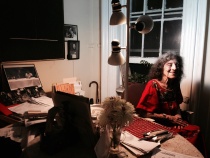
Communing with Dore Ashton
By Michael Corris
A tribute to Dore Ashton, “one of the most energetic, widely published, and politicized American writers on art, and one of the chief proponents of the artists of the New York School (she decried the label Abstract Expressionism).” Michael Corris shares his remembrances of Dore Ashton as well as the audio and transcribed text from their 2011 conversation about Ashton’s experiences with the New York art world in the 19650s and 1960s. Alfredo Jaar’s film, Dore Ashton, you know (2015), and photographs by Madeline Djerejian and Polly Bradford-Corris are also presented here.

Communing with Dore Ashton
By Michael Corris
A tribute to Dore Ashton, “one of the most energetic, widely published, and politicized American writers on art, and one of the chief proponents of the artists of the New York School (she decried the label Abstract Expressionism).” Michael Corris shares his remembrances of Dore Ashton as well as the audio and transcribed text from their 2011 conversation about Ashton’s experiences with the New York art world in the 19650s and 1960s. Alfredo Jaar’s film, Dore Ashton, you know (2015), and photographs by Madeline Djerejian and Polly Bradford-Corris are also presented here.

Temporary Collectives
An update from Temporary Collectives, a dynamic intercollegiate graduate project involving professors and students from six universities in North Texas.

Temporary Collectives
An update from Temporary Collectives, a dynamic intercollegiate graduate project involving professors and students from six universities in North Texas.
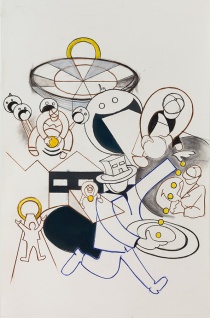
Playing by the Rules: Ericka Beckman in Conversation with Mary L. Coyne
By Mary L. Coyne
For the first conversation in Mary L. Coyne’s Playing by the Rules series, Coyne speaks with filmmaker Ericka Beckman about the framework of games and performance in Beckman’s films You The Better and Cinderella.

Playing by the Rules: Ericka Beckman in Conversation with Mary L. Coyne
By Mary L. Coyne
For the first conversation in Mary L. Coyne’s Playing by the Rules series, Coyne speaks with filmmaker Ericka Beckman about the framework of games and performance in Beckman’s films You The Better and Cinderella.

Playing by the Rules (Parts I–III)
By Mary L. Coyne
An introduction to Playing by the Rules, a new conversation series by curator and writer Mary L. Coyne.

Playing by the Rules (Parts I–III)
By Mary L. Coyne
An introduction to Playing by the Rules, a new conversation series by curator and writer Mary L. Coyne.

Update from Voices in Contemporary Art
An update from Voices in Contemporary Art (VoCA) on the most recent issue of VoCA Journal.

Update from Voices in Contemporary Art
An update from Voices in Contemporary Art (VoCA) on the most recent issue of VoCA Journal.
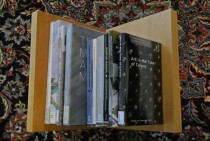
Bookshelf: Alexandra Nitschke
By Alexandra Nitschke
Alexandra Nitschke shares what she’s reading with Art Journal Open.

Bookshelf: Alexandra Nitschke
By Alexandra Nitschke
Alexandra Nitschke shares what she’s reading with Art Journal Open.
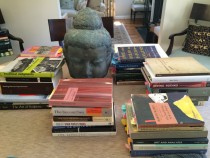
Bookshelf: Lynn M. Somers
By Lynn M. Somers
Lynn M. Somers shares her reading list in this new installment of Art Journal Open’s Bookshelf.

Bookshelf: Lynn M. Somers
By Lynn M. Somers
Lynn M. Somers shares her reading list in this new installment of Art Journal Open’s Bookshelf.
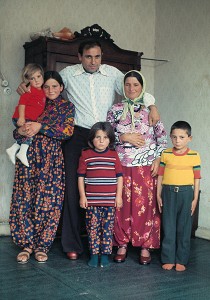
Candida Höfer’s Türken in Deutschland as “Counter-publicity”
By Amy A. DaPonte
Millions of Turkish immigrants settled in Germany after World War II to answer the call of politicians who needed to refresh the labor force after the war. Images of Turks at work or leisure in the parks, homes, markets, shops, and bars of 1970s West German cities populate Candida Höfer’s large, multiformat series entitled Türken in Deutschland (Turks in Germany, 1972–79).

Candida Höfer’s Türken in Deutschland as “Counter-publicity”
By Amy A. DaPonte
Millions of Turkish immigrants settled in Germany after World War II to answer the call of politicians who needed to refresh the labor force after the war. Images of Turks at work or leisure in the parks, homes, markets, shops, and bars of 1970s West German cities populate Candida Höfer’s large, multiformat series entitled Türken in Deutschland (Turks in Germany, 1972–79).
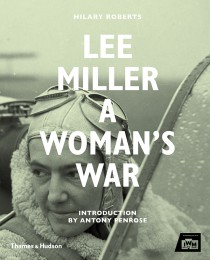
Lee Miller, Challenging Convention
By Lauren Richman
Lauren Richman reviews Hilary Roberts, ed., Lee Miller: A Woman’s War, and the exhibition Lee Miller: A Woman’s War, and Walter Moser and Klaus Albrecht Schröder, eds., Lee Miller, and the exhibition Lee Miller, aka Lee Miller—Photographs and The Indestructible Lee Miller

Lee Miller, Challenging Convention
By Lauren Richman
Lauren Richman reviews Hilary Roberts, ed., Lee Miller: A Woman’s War, and the exhibition Lee Miller: A Woman’s War, and Walter Moser and Klaus Albrecht Schröder, eds., Lee Miller, and the exhibition Lee Miller, aka Lee Miller—Photographs and The Indestructible Lee Miller

Bookshelf: Elise Dodeles
By Elise Dodeles
In this new installment of Art Journal Open’s Bookshelf, Elise Dodeles shares what she’s reading.

Bookshelf: Elise Dodeles
By Elise Dodeles
In this new installment of Art Journal Open’s Bookshelf, Elise Dodeles shares what she’s reading.
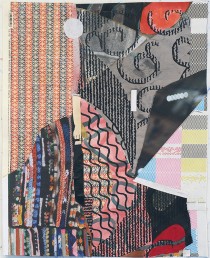
Art Practice beyond the Home Studio: Roberto Visani and Caitlin Masley-Charlet in Conversation
By Caitlin Masley-Charlet
Caitlin Masley-Charlet, deputy director of Guttenberg Arts in Guttenberg, New Jersey, and artist Roberto Visani discuss his experiences while artist-in-residence at Guttenberg Arts and other residencies.

Art Practice beyond the Home Studio: Roberto Visani and Caitlin Masley-Charlet in Conversation
By Caitlin Masley-Charlet
Caitlin Masley-Charlet, deputy director of Guttenberg Arts in Guttenberg, New Jersey, and artist Roberto Visani discuss his experiences while artist-in-residence at Guttenberg Arts and other residencies.

Bookshelf: Lisa Pon
By Lisa Pon
Lisa Pon shares her reading list in this new installment of Art Journal Open’s Bookshelf.

Bookshelf: Lisa Pon
By Lisa Pon
Lisa Pon shares her reading list in this new installment of Art Journal Open’s Bookshelf.
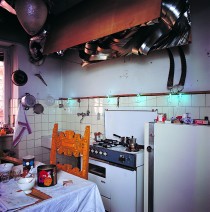
Solitary/Solidary: Mario Merz’s Autonomous Artist
By Elizabeth Mangini
In 1968, while demonstrating students occupied university buildings less than a mile away, the Italian artist Mario Merz hung a handful of neon lights bent into the numerals 1, 1, 2, 3, and 5 above the kitchen stove in his home on Via Santa Giulia in Turin. It wasn’t yet an artwork, just something to think about in the place where he and his wife, fellow artist Marisa Merz, gathered to talk with each other and with friends.

Solitary/Solidary: Mario Merz’s Autonomous Artist
By Elizabeth Mangini
In 1968, while demonstrating students occupied university buildings less than a mile away, the Italian artist Mario Merz hung a handful of neon lights bent into the numerals 1, 1, 2, 3, and 5 above the kitchen stove in his home on Via Santa Giulia in Turin. It wasn’t yet an artwork, just something to think about in the place where he and his wife, fellow artist Marisa Merz, gathered to talk with each other and with friends.
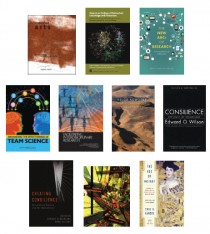
Art-Science: An Annotated Bibliography
By Roger F. Malina
We are witnessing a resurgence of creative and scholarly work that seeks to bridge science and engineering with the arts, design, and the humanities. These practices connect both the arts and sciences, hence the term art-science, and the arts and the engineering sciences and technology, hence the term “art and technology.”

Art-Science: An Annotated Bibliography
By Roger F. Malina
We are witnessing a resurgence of creative and scholarly work that seeks to bridge science and engineering with the arts, design, and the humanities. These practices connect both the arts and sciences, hence the term art-science, and the arts and the engineering sciences and technology, hence the term “art and technology.”
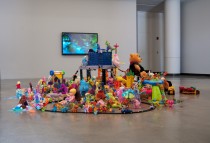
Happyville in the Rearview: A Conversation between Joel Tauber and Pedro de Llano
By Pedro de Llano
Curator and art historian Pedro de Llano speaks with artist Joel Tauber about Tauber’s The Sharing Project (2012–16), an installation and film project that looks at the socialist Jewish community of Happyville (1905–1908) in South Carolina as a way to consider complex questions about social, political, and economic issues in today’s world.

Happyville in the Rearview: A Conversation between Joel Tauber and Pedro de Llano
By Pedro de Llano
Curator and art historian Pedro de Llano speaks with artist Joel Tauber about Tauber’s The Sharing Project (2012–16), an installation and film project that looks at the socialist Jewish community of Happyville (1905–1908) in South Carolina as a way to consider complex questions about social, political, and economic issues in today’s world.
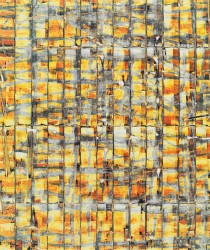
A New Configuration: Marco Breuer in Conversation with Vanessa Kauffman
By Vanessa Kauffman
Artist Marco Breuer and Vanessa Kauffman, communications and outreach manager of Headlands Center for the Arts (Sausalito, California), discuss Breuer’s experiences as an artist-in-residence at Headlands and other residencies, and the way that the flexibility and differences in the studio set-up at each residency creates opportunities for new discoveries.

A New Configuration: Marco Breuer in Conversation with Vanessa Kauffman
By Vanessa Kauffman
Artist Marco Breuer and Vanessa Kauffman, communications and outreach manager of Headlands Center for the Arts (Sausalito, California), discuss Breuer’s experiences as an artist-in-residence at Headlands and other residencies, and the way that the flexibility and differences in the studio set-up at each residency creates opportunities for new discoveries.

Root and Ramble: Kija Lucas and Amy Cancelmo in Conversation
By Amy Cancelmo
Amy Cancelmo, art programs director at Root Division (San Francisco, California), speaks with artist Kija Lucas about her experiences as an artist-in-residence at Root Division and other residencies, and her cross-country travels to work on her projects In Search of Home and Objects to Remember You By: An Index of Sentiment .

Root and Ramble: Kija Lucas and Amy Cancelmo in Conversation
By Amy Cancelmo
Amy Cancelmo, art programs director at Root Division (San Francisco, California), speaks with artist Kija Lucas about her experiences as an artist-in-residence at Root Division and other residencies, and her cross-country travels to work on her projects In Search of Home and Objects to Remember You By: An Index of Sentiment .
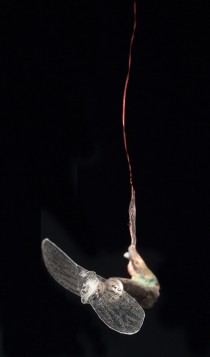
Between Negative Dialectics and Biological Aesthesis
By Charissa Terranova
Charissa Terranova reviews Wetware: Art, Agency, Animation, which was on view at the Beall Center for Art + Technology, University of California, Irvine, from February 6–May 7, 2016.

Between Negative Dialectics and Biological Aesthesis
By Charissa Terranova
Charissa Terranova reviews Wetware: Art, Agency, Animation, which was on view at the Beall Center for Art + Technology, University of California, Irvine, from February 6–May 7, 2016.
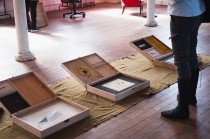
Outside of Time: Patricia Fernández Carcedo in Conversation with Vanessa Kauffman
By Vanessa Kauffman
Vanessa Kauffman, communications and outreach manager for Headlands Center for the Arts (Sausalito, California), speaks with artist Patricia Fernández Carcedo about her experiences as an artist-in-residence at Headlands and other residencies, and the importance that walking holds within her artistic practice.

Outside of Time: Patricia Fernández Carcedo in Conversation with Vanessa Kauffman
By Vanessa Kauffman
Vanessa Kauffman, communications and outreach manager for Headlands Center for the Arts (Sausalito, California), speaks with artist Patricia Fernández Carcedo about her experiences as an artist-in-residence at Headlands and other residencies, and the importance that walking holds within her artistic practice.
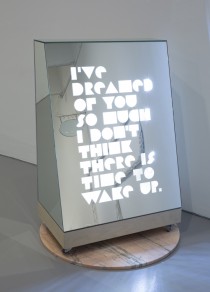
Humans Have Been Human for So Long: Shana Lutker and Mika Yoshitake in Conversation
By Mika Yoshitake
Curator Mika Yoshitake and artist Shana Lutker discuss Surrealist fightfights, making sense of the past through the lens of the contemporary, and the research process for Lutker’s exhibition Shana Lutker: Le “NEW” Monocle, Chapters 1–3 at the Hirshhorn Museum and Sculpture Garden in Washington, DC (October 27, 2015–February 16, 2016), which was curated by Yoshitake.

Humans Have Been Human for So Long: Shana Lutker and Mika Yoshitake in Conversation
By Mika Yoshitake
Curator Mika Yoshitake and artist Shana Lutker discuss Surrealist fightfights, making sense of the past through the lens of the contemporary, and the research process for Lutker’s exhibition Shana Lutker: Le “NEW” Monocle, Chapters 1–3 at the Hirshhorn Museum and Sculpture Garden in Washington, DC (October 27, 2015–February 16, 2016), which was curated by Yoshitake.
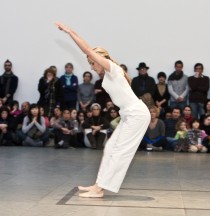
Space Travel: Trisha Brown’s Locus
By Amanda Jane Graham
In 1974 the choreographer Trisha Brown moved to 541 Broadway in SoHo, New York City. The cast-iron “nexus” for postmodern dance, commonly referred to as “the dance building,” had what the former Brown company dancer Elizabeth Garren describes as a “communal atmosphere.” Purchased and renovated by the Fluxus founder George Maciunas “with dancers in mind,” 541 was wider than the majority of the standard buildings in the neighborhood, and more important, it contained no interior pillars, making it an ideal choreographic work space.

Space Travel: Trisha Brown’s Locus
By Amanda Jane Graham
In 1974 the choreographer Trisha Brown moved to 541 Broadway in SoHo, New York City. The cast-iron “nexus” for postmodern dance, commonly referred to as “the dance building,” had what the former Brown company dancer Elizabeth Garren describes as a “communal atmosphere.” Purchased and renovated by the Fluxus founder George Maciunas “with dancers in mind,” 541 was wider than the majority of the standard buildings in the neighborhood, and more important, it contained no interior pillars, making it an ideal choreographic work space.
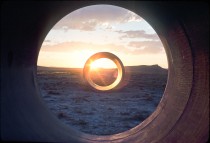
Troubling Troublemakers
By Chris Taylor
Chris Taylor reviews Troublemakers: The Story of Land Art (2015), written and directed by James Crump.

Troubling Troublemakers
By Chris Taylor
Chris Taylor reviews Troublemakers: The Story of Land Art (2015), written and directed by James Crump.
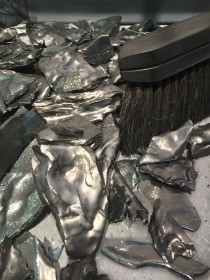
Caitlin Masley-Charlet and Diana Shpungin in Conversation
By Caitlin Masley-Charlet
Caitlin Masley-Charlet, deputy director of Guttenberg Arts (Guttenberg, NJ), speaks with artist Diana Shpungin about her experiences as an artist-in-residence at Guttenberg Arts and other programs, artistic community, and the importance of having space for experimentation. This is the first conversation in a four-part series by Caitlin Masley-Charlet, focusing on artists who were recently in residence at Guttenberg Arts.

Caitlin Masley-Charlet and Diana Shpungin in Conversation
By Caitlin Masley-Charlet
Caitlin Masley-Charlet, deputy director of Guttenberg Arts (Guttenberg, NJ), speaks with artist Diana Shpungin about her experiences as an artist-in-residence at Guttenberg Arts and other programs, artistic community, and the importance of having space for experimentation. This is the first conversation in a four-part series by Caitlin Masley-Charlet, focusing on artists who were recently in residence at Guttenberg Arts.

Knight’s Heritage: Karl Haendel and the Legacy of Appropriation, Episode Three, 2013
By Natilee Harren
In “Episode Three, 2013,” Natilee Harren looks at artist Karl Haendel’s practice of appropriation within the context of today’s image culture. This is the third and final part of her essay, “Karl Haendel and the Legacy of Appropriation.”

Knight’s Heritage: Karl Haendel and the Legacy of Appropriation, Episode Three, 2013
By Natilee Harren
In “Episode Three, 2013,” Natilee Harren looks at artist Karl Haendel’s practice of appropriation within the context of today’s image culture. This is the third and final part of her essay, “Karl Haendel and the Legacy of Appropriation.”
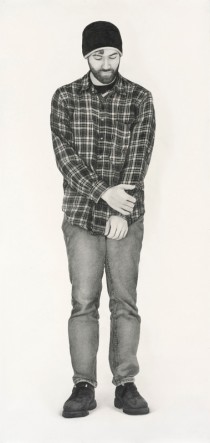
Response to Natilee Harren’s “Knight’s Heritage: Karl Haendel and the Legacy of Appropriation, Episode Three, 2013”
By Nate Harrison
Nate Harrison responds to “Episode Three, 2013,” the third and final part of Natilee Harren’s essay, “Karl Haendel and the Legacy of Appropriation.”

Response to Natilee Harren’s “Knight’s Heritage: Karl Haendel and the Legacy of Appropriation, Episode Three, 2013”
By Nate Harrison
Nate Harrison responds to “Episode Three, 2013,” the third and final part of Natilee Harren’s essay, “Karl Haendel and the Legacy of Appropriation.”
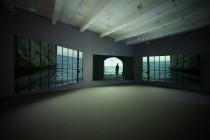
Small Boats, Slave Ship; or, Isaac Julien and the Beauty of Implied Catastrophe
By Emma Chubb
Three horizontal screens stretch across two gallery walls, suspended from the ceiling and hung in a slight arc. At first, the two flanking screens remain dark and only the center screen is illuminated. It shows an expanse of blue water, waves rippling with gold and reflecting the setting sun as they gently curl forward onto a barely visible beach.

Small Boats, Slave Ship; or, Isaac Julien and the Beauty of Implied Catastrophe
By Emma Chubb
Three horizontal screens stretch across two gallery walls, suspended from the ceiling and hung in a slight arc. At first, the two flanking screens remain dark and only the center screen is illuminated. It shows an expanse of blue water, waves rippling with gold and reflecting the setting sun as they gently curl forward onto a barely visible beach.

The Arctic Plants of New York City: An Annotated Bibliography
By James Walsh
I’ve been working since 2008 on a long, complex project centered on plants that grow in both the arctic (I always use the lowercase) and New York City, of which there are a surprising number. Along with identifying and pressing these plants, I’ve been reading eighteenth-century herbals and floras and more recent works on edible plants and botany generally, and have had a particular interest in mental travel and in writers who combine botany and literature.

The Arctic Plants of New York City: An Annotated Bibliography
By James Walsh
I’ve been working since 2008 on a long, complex project centered on plants that grow in both the arctic (I always use the lowercase) and New York City, of which there are a surprising number. Along with identifying and pressing these plants, I’ve been reading eighteenth-century herbals and floras and more recent works on edible plants and botany generally, and have had a particular interest in mental travel and in writers who combine botany and literature.

Knight’s Heritage: Karl Haendel and the Legacy of Appropriation, Episode Two, 2012
By Natilee Harren
In “Episode Two” of her three-part essay, “Knight’s Heritage: Karl Haendel and the Legacy of Appropriation,” Natilee Harren explores appropriation, artistic heritage, and medieval suits of armor through the context of an encounter between Karl Haendel and an artist of an earlier generation, Robert Longo.

Knight’s Heritage: Karl Haendel and the Legacy of Appropriation, Episode Two, 2012
By Natilee Harren
In “Episode Two” of her three-part essay, “Knight’s Heritage: Karl Haendel and the Legacy of Appropriation,” Natilee Harren explores appropriation, artistic heritage, and medieval suits of armor through the context of an encounter between Karl Haendel and an artist of an earlier generation, Robert Longo.
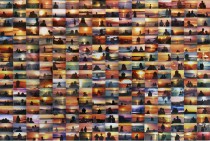
Response to Natilee Harren’s “Knight’s Heritage: Karl Haendel and the Legacy of Appropriation, Episode Two, 2012”
By Nate Harrison
Nate Harrison responds to “Episode Two, 2012,” the second part of Natilee Harren’s essay, “Knight’s Heritage: Karl Haendel and the Legacy of Appropriation.”

Response to Natilee Harren’s “Knight’s Heritage: Karl Haendel and the Legacy of Appropriation, Episode Two, 2012”
By Nate Harrison
Nate Harrison responds to “Episode Two, 2012,” the second part of Natilee Harren’s essay, “Knight’s Heritage: Karl Haendel and the Legacy of Appropriation.”
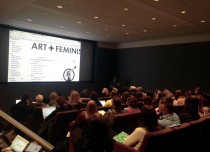
Wikipedia Needs You, But Do You Need Wikipedia?
By Chelsea Spengemann
Chelsea Spengemann on the Art+Feminism Wikipedia Edit-a-thon held at the Museum of Modern Art on March 5, 2016.

Wikipedia Needs You, But Do You Need Wikipedia?
By Chelsea Spengemann
Chelsea Spengemann on the Art+Feminism Wikipedia Edit-a-thon held at the Museum of Modern Art on March 5, 2016.

Bookshelf: Jongwoo Jeremy Kim
For this new installment of Art Journal Open Bookshelf, Jongwoo Jeremy Kim shares his reading list.

Bookshelf: Jongwoo Jeremy Kim
For this new installment of Art Journal Open Bookshelf, Jongwoo Jeremy Kim shares his reading list.
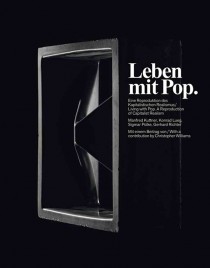
Leaving Düsseldorf
By Godfre Leung
Godfre Leung reviews Sabine Breitwieser, Laura J. Hoptman, Michael Darling, and Jeffrey D. Grove, Isa Genzken: Retrospective, and the exhibition Isa Genzken: Retrospective; Kathy Halbreich, ed., Alibis: Sigmar Polke, 1963–2010, and the exhibition Alibis: Sigmar Polke, 1963–2010; and Elodie Evers, Magdalena Holzhey, and Gregor Jansen, eds., Leben mit Pop and the exhibition Leben mit Pop.

Leaving Düsseldorf
By Godfre Leung
Godfre Leung reviews Sabine Breitwieser, Laura J. Hoptman, Michael Darling, and Jeffrey D. Grove, Isa Genzken: Retrospective, and the exhibition Isa Genzken: Retrospective; Kathy Halbreich, ed., Alibis: Sigmar Polke, 1963–2010, and the exhibition Alibis: Sigmar Polke, 1963–2010; and Elodie Evers, Magdalena Holzhey, and Gregor Jansen, eds., Leben mit Pop and the exhibition Leben mit Pop.
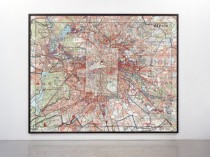
Against Infographics
By Daniel Rosenberg
When design is excellent, graphics reveal data, writes the infographics guru Edward Tufte. Good information graphics allow the reader to see relationships not apparent in data without visual form. In principle, such graphics do not impose interpretations but, by showing relationships, make interpretations possible.

Against Infographics
By Daniel Rosenberg
When design is excellent, graphics reveal data, writes the infographics guru Edward Tufte. Good information graphics allow the reader to see relationships not apparent in data without visual form. In principle, such graphics do not impose interpretations but, by showing relationships, make interpretations possible.

Knight’s Heritage: Karl Haendel and the Legacy of Appropriation, Episode One, 2000
By Natilee Harren
In Natilee Harren’s three-part essay series on issues of appropriation and artistic heritage, she examines episodes in the work of the Los Angeles–based artist Karl Haendel. In “Episode One,” Harren looks closely at Haendel’s Knight’s Heritage, 1963 (2001), which he made as a graduate student, and how it relates to the career and work of the sculptor Anne Truitt (1921–2004). Haendel made his work, a reconstruction of a 1963 work by Truitt, based on photographs, without ever having seen the Truitt sculpture itself.

Knight’s Heritage: Karl Haendel and the Legacy of Appropriation, Episode One, 2000
By Natilee Harren
In Natilee Harren’s three-part essay series on issues of appropriation and artistic heritage, she examines episodes in the work of the Los Angeles–based artist Karl Haendel. In “Episode One,” Harren looks closely at Haendel’s Knight’s Heritage, 1963 (2001), which he made as a graduate student, and how it relates to the career and work of the sculptor Anne Truitt (1921–2004). Haendel made his work, a reconstruction of a 1963 work by Truitt, based on photographs, without ever having seen the Truitt sculpture itself.
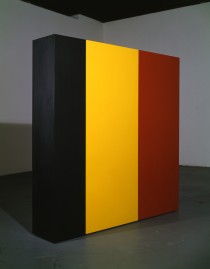
Response to Natilee Harren’s “Knight’s Heritage: Karl Haendel and the Legacy of Appropriation, Episode One, 2000”
By Nate Harrison
Nate Harrison responds to “Knight’s Heritage: Karl Haendel and the Legacy of Appropriation, Episode One” by Natilee Harren.

Response to Natilee Harren’s “Knight’s Heritage: Karl Haendel and the Legacy of Appropriation, Episode One, 2000”
By Nate Harrison
Nate Harrison responds to “Knight’s Heritage: Karl Haendel and the Legacy of Appropriation, Episode One” by Natilee Harren.
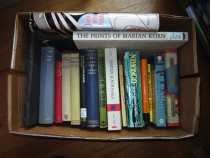
Bookshelf: Christopher Reed
Christopher Reed shares what he’s reading in this new installment of Art Journal Open’s Bookshelf series.

Bookshelf: Christopher Reed
Christopher Reed shares what he’s reading in this new installment of Art Journal Open’s Bookshelf series.

Update from the European Postwar and Contemporary Art Forum
European Postwar and Contemporary Art Forum shares a News & Notes update on their recent activities.

Update from the European Postwar and Contemporary Art Forum
European Postwar and Contemporary Art Forum shares a News & Notes update on their recent activities.
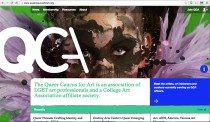
Update from the Queer Caucus for Art
New in News & Notes: An update from the Queer Caucus for Art.
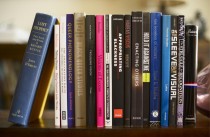
Bookshelf: Derek Conrad Murray
Derek Conrad Murray shares his reading list in this week’s Art Journal Open Bookshelf.

Bookshelf: Derek Conrad Murray
Derek Conrad Murray shares his reading list in this week’s Art Journal Open Bookshelf.

Report on the Society of Contemporary Art Historians
The newest installment of News & Notes is a report on the Society of Contemporary Art Historians.

Report on the Society of Contemporary Art Historians
The newest installment of News & Notes is a report on the Society of Contemporary Art Historians.

Rewilding: An Emerging History of Common Field
By James McAnally
Common Field was born of a singular moment, a shared time of simmering scarcity matched with an abundance of artist-centric models springing up globally. The emergent network is quickly becoming a central figure within a spectrum of new alternative forms increasingly coming to define a deflated decade.

Rewilding: An Emerging History of Common Field
By James McAnally
Common Field was born of a singular moment, a shared time of simmering scarcity matched with an abundance of artist-centric models springing up globally. The emergent network is quickly becoming a central figure within a spectrum of new alternative forms increasingly coming to define a deflated decade.
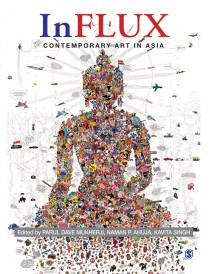
Barbarians at the Gates: Contemporary Art and Globalization in Asia
By Sonal Khullar
Sonal Khullar reviews InFlux: Contemporary Art in Asia edited by Parul Dave-Mukherji, Naman P. Ahuja, and Kavita Singh.

Barbarians at the Gates: Contemporary Art and Globalization in Asia
By Sonal Khullar
Sonal Khullar reviews InFlux: Contemporary Art in Asia edited by Parul Dave-Mukherji, Naman P. Ahuja, and Kavita Singh.

The Body is a Location: Math Bass in Conversation with Mia Locks
By Mia Locks
Curator Mia Locks speaks with artist Math Bass about ambiguity, body movement, and the recent exhibition of Bass’s work that Locks curated, Math Bass: Off the Clock, which was on view at MoMA PS1 from May 3 to September 7, 2015.

The Body is a Location: Math Bass in Conversation with Mia Locks
By Mia Locks
Curator Mia Locks speaks with artist Math Bass about ambiguity, body movement, and the recent exhibition of Bass’s work that Locks curated, Math Bass: Off the Clock, which was on view at MoMA PS1 from May 3 to September 7, 2015.
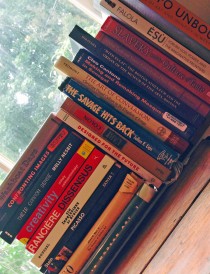
Bookshelf: Suzanne Preston Blier
In the newest installment of Art Journal Open’s Bookshelf project, Suzanne Preston Blier shares what she’s been reading.

Bookshelf: Suzanne Preston Blier
In the newest installment of Art Journal Open’s Bookshelf project, Suzanne Preston Blier shares what she’s been reading.
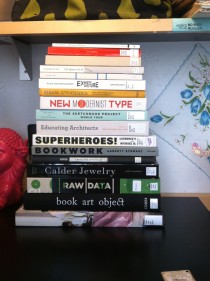
Bookshelf: Lareese Hall
Lareese Hall shares her “work” and “life” bookshelves in this installment of Art Journal Open’s Bookshelf series.

Bookshelf: Lareese Hall
Lareese Hall shares her “work” and “life” bookshelves in this installment of Art Journal Open’s Bookshelf series.

How Have New Technologies Shaped the Introductory Art History Classroom? Why Does It Matter? An Update from Art Historians Interested in Pedagogy and Technology
Art Journal Open’s News & Notes section launches with an update from Art Historians Interested in Pedagogy and Technology.

How Have New Technologies Shaped the Introductory Art History Classroom? Why Does It Matter? An Update from Art Historians Interested in Pedagogy and Technology
Art Journal Open’s News & Notes section launches with an update from Art Historians Interested in Pedagogy and Technology.

Bookshelf: Paul A. Ranogajec
Paul A. Ranogajec shares his reading list in this installment of Art Journal Open’s Bookshelf series.

Bookshelf: Paul A. Ranogajec
Paul A. Ranogajec shares his reading list in this installment of Art Journal Open’s Bookshelf series.

Yoga for Adjuncts: The Somatics of Human Capital
By Christian Nagler
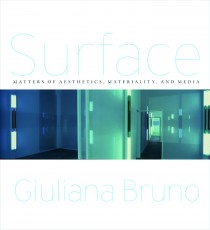
Superficial Thinking: Screen Practices and Screen Architectures
By Swagato Chakravorty
Swagato Chakravorty reviews Surface: Matters of Aesthetics, Materiality, and Media by Giuliana Bruno.

Superficial Thinking: Screen Practices and Screen Architectures
By Swagato Chakravorty
Swagato Chakravorty reviews Surface: Matters of Aesthetics, Materiality, and Media by Giuliana Bruno.

Bookshelf: Judith Rodenbeck
Judith Rodenbeck shares her summer reading in the newest installment of Art Journal Open’s Bookshelf series.

Bookshelf: Judith Rodenbeck
Judith Rodenbeck shares her summer reading in the newest installment of Art Journal Open’s Bookshelf series.

Bookshelf: Matthew Israel
In this week’s Bookshelf, Matthew Israel shares what he’s reading.
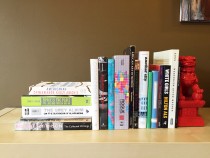
Bookshelf: Steven Nelson
Steven Nelson shares what’s on his bookshelf.
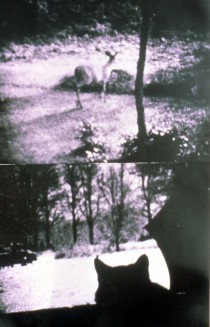
“The Cat Is My Medium”: Notes on the Writing and Art of Carolee Schneemann
By Thyrza Nichols Goodeve
For several years, Carolee Schneemann has presented an ever-evolving performative lecture about her work, starting with drawings she made at the ages of four and seven. I first saw it in 2009 at St. Mark’s Church.

“The Cat Is My Medium”: Notes on the Writing and Art of Carolee Schneemann
By Thyrza Nichols Goodeve
For several years, Carolee Schneemann has presented an ever-evolving performative lecture about her work, starting with drawings she made at the ages of four and seven. I first saw it in 2009 at St. Mark’s Church.

Not Getting There Is Half the Fun: Holidays with Freud
By Elizabeth Legge
Elizabeth Legge reviews Sharon Kivland’s Freud on Holiday series.

Not Getting There Is Half the Fun: Holidays with Freud
By Elizabeth Legge
Elizabeth Legge reviews Sharon Kivland’s Freud on Holiday series.

Bookshelf: Megan A. Sullivan
Megan A. Sullivan shares her summer reading list in this week’s Bookshelf.

Bookshelf: Megan A. Sullivan
Megan A. Sullivan shares her summer reading list in this week’s Bookshelf.

In, Around, and Afterthoughts (On Participation): Photography and Agency in Martha Rosler’s Collaboration with Homeward Bound
By Adair Rounthwaite
It seems obvious to state that photographs play a central role in our ability to study participatory art. Art historians, however, have largely bracketed this as an issue that might be important for how we conceive the politics and aesthetics of participation.

In, Around, and Afterthoughts (On Participation): Photography and Agency in Martha Rosler’s Collaboration with Homeward Bound
By Adair Rounthwaite
It seems obvious to state that photographs play a central role in our ability to study participatory art. Art historians, however, have largely bracketed this as an issue that might be important for how we conceive the politics and aesthetics of participation.
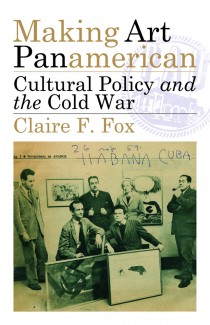
Transnational Fields and the Blindness of the Archive
By Dorota Biczel
Dorota Biczel reviews Making Art Panamerican: Cultural Policy and the Cold War by Claire F. Fox.

Transnational Fields and the Blindness of the Archive
By Dorota Biczel
Dorota Biczel reviews Making Art Panamerican: Cultural Policy and the Cold War by Claire F. Fox.

Primal Matter: An Annotated Bibliography for Ceramics
By Brian Molanphy
This introductory selection of texts on ceramics includes books that offer general foundations as well as essays that exemplify specific investigations.

Primal Matter: An Annotated Bibliography for Ceramics
By Brian Molanphy
This introductory selection of texts on ceramics includes books that offer general foundations as well as essays that exemplify specific investigations.
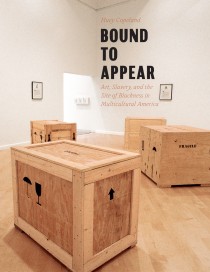
Objects Made Black
by Sampada Aranke
Sampada Aranke reviews Bound to Appear: Art, Slavery, and the Site of Blackness in Multicultural America by Huey Copeland.

Objects Made Black
by Sampada Aranke
Sampada Aranke reviews Bound to Appear: Art, Slavery, and the Site of Blackness in Multicultural America by Huey Copeland.
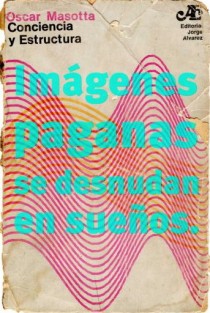
Dead Boars, Viruses, and Zombies: Roberto Jacoby’s Art History
By Daniel R. Quiles
The subtlest of deceptions lies in wait in a “1000 Words” feature on Roberto Jacoby in the March 2011 issue of Artforum.

Dead Boars, Viruses, and Zombies: Roberto Jacoby’s Art History
By Daniel R. Quiles
The subtlest of deceptions lies in wait in a “1000 Words” feature on Roberto Jacoby in the March 2011 issue of Artforum.
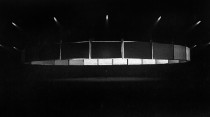
The New Geography: Earth Music and Land Art, Version 2.0; Comparison #2
By Mike Maizels
Mike Maizels examines Shawn Brixey’s Epicycle (2000) and Robert Smithson’s Pointless Vanishing Point (1967) in the second installment of The New Geography: Earth Music and Land Art, Version 2.0.

The New Geography: Earth Music and Land Art, Version 2.0; Comparison #2
By Mike Maizels
Mike Maizels examines Shawn Brixey’s Epicycle (2000) and Robert Smithson’s Pointless Vanishing Point (1967) in the second installment of The New Geography: Earth Music and Land Art, Version 2.0.

Imprinting Agnes Martin
By Karen L. Schiff
In the early 1990s I saw a conference presentation about Agnes Martin’s grid paintings, and their rigor and sensitivity was imprinted on me: I felt motivated to return to making art. When Martin (1912–2004) passed away, I started making artworks to reflect on her work and life, often through printed texts.

Imprinting Agnes Martin
By Karen L. Schiff
In the early 1990s I saw a conference presentation about Agnes Martin’s grid paintings, and their rigor and sensitivity was imprinted on me: I felt motivated to return to making art. When Martin (1912–2004) passed away, I started making artworks to reflect on her work and life, often through printed texts.
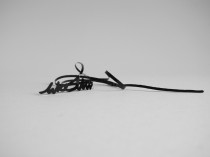
A Fine Line: Drawing and the Digital Ground in the Work of Tamarin Norwood
By Becky Huff Hunter
Becky Huff Hunter and Tamarin Norwood discuss video’s relationship with drawing, negotiating digital and analogue forms, pursing a research-based PhD in Fine Art, and more.

A Fine Line: Drawing and the Digital Ground in the Work of Tamarin Norwood
By Becky Huff Hunter
Becky Huff Hunter and Tamarin Norwood discuss video’s relationship with drawing, negotiating digital and analogue forms, pursing a research-based PhD in Fine Art, and more.
Spring 2014, Vol. 73, No. 1
Artist’s Project Karen L. Schiff, Counter to Type Drawings appear on the front and back covers of this issue, on pages 2-3, on pages 5–11 with the artist’s essay, “Connecting the Dots/Hijacking Typography,” and in the Reviews section, pages 76–85.
Spring 2014, Vol. 73, No. 1
Artist’s Project Karen L. Schiff, Counter to Type Drawings appear on the front and back covers of this issue, on pages 2-3, on pages 5–11 with the artist’s essay, “Connecting the Dots/Hijacking Typography,” and in the Reviews section, pages 76–85.
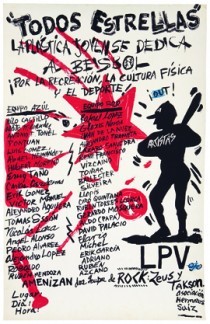
Nueve entradas en 1989
By Tamara Díaz Bringas
Playball, habría dicho el umpire para iniciar aquel partido de béisbol con tantos artistas y ningún pelotero. Playball, habrían oído los jugadores, sospechando tal vez que el juego había empezado en verdad mucho antes de aquel 24 de septiembre de 1989.

Nueve entradas en 1989
By Tamara Díaz Bringas
Playball, habría dicho el umpire para iniciar aquel partido de béisbol con tantos artistas y ningún pelotero. Playball, habrían oído los jugadores, sospechando tal vez que el juego había empezado en verdad mucho antes de aquel 24 de septiembre de 1989.
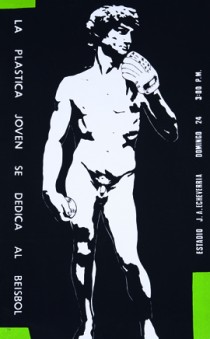
Nine Innings in 1989
By Tamara Díaz Bringas
“Play ball!” the umpire would have said to start that baseball game with so many artists and not a single ballplayer. “Play ball!” the players would have heard, perhaps suspecting that the game had really begun long before that 24th of September in 1989.

Nine Innings in 1989
By Tamara Díaz Bringas
“Play ball!” the umpire would have said to start that baseball game with so many artists and not a single ballplayer. “Play ball!” the players would have heard, perhaps suspecting that the game had really begun long before that 24th of September in 1989.

Between Ecology and Looking Back: Environment and Revisionism in Le Corbusier: An Atlas of Modern Landscapes
Charissa N. Terranova reviews Le Corbusier: An Atlas of Modern Landscapes.

Between Ecology and Looking Back: Environment and Revisionism in Le Corbusier: An Atlas of Modern Landscapes
Charissa N. Terranova reviews Le Corbusier: An Atlas of Modern Landscapes.
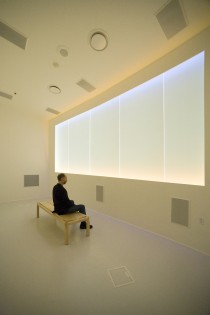
The New Geography: Earth Music and Land Art, Version 2.0
By Mike Maizels
The apologists for “Big Data” seem to be everywhere these days. In forums ranging from TED talks to marketing campaigns, we are now being bombarded by the just-on-the-horizon possibilities of Total Information. It is no surprise that a particular articulation of these ideas has also surfaced in the world of contemporary art practice.

The New Geography: Earth Music and Land Art, Version 2.0
By Mike Maizels
The apologists for “Big Data” seem to be everywhere these days. In forums ranging from TED talks to marketing campaigns, we are now being bombarded by the just-on-the-horizon possibilities of Total Information. It is no surprise that a particular articulation of these ideas has also surfaced in the world of contemporary art practice.
Winter 2012, Vol. 71, No. 4
In This Issue Katy Siegel, Shaping the Glass, 5 Artist’s Project Tomma Abts, Untitled, 8 Features Christine Mehring, Richter’s Willkür, 20 Carrie Moyer, Zero to the Bone: Louise Fishman Speaks with Carrie Moyer, 36 Elyse Speaks, The Terms of Craft
Winter 2012, Vol. 71, No. 4
In This Issue Katy Siegel, Shaping the Glass, 5 Artist’s Project Tomma Abts, Untitled, 8 Features Christine Mehring, Richter’s Willkür, 20 Carrie Moyer, Zero to the Bone: Louise Fishman Speaks with Carrie Moyer, 36 Elyse Speaks, The Terms of Craft
Summer 2013, Vol. 72, No. 2
Features Alexandra M. Kokoli, The Voice as Uncanny Index in Susan Hiller’s The Last Silent Movie, 6 Kristen Olds, “Gay Life Artists”: Les Petites Bonbons and Camp Performativity in the 1970s, 16 Forum: Conversations on Queer Affect and Queer Archives
Summer 2013, Vol. 72, No. 2
Features Alexandra M. Kokoli, The Voice as Uncanny Index in Susan Hiller’s The Last Silent Movie, 6 Kristen Olds, “Gay Life Artists”: Les Petites Bonbons and Camp Performativity in the 1970s, 16 Forum: Conversations on Queer Affect and Queer Archives
Spring 2013, Vol. 72, No.1
Editor’s Note Lane Relyea, 5 Features Peggy Wang, Art Critics as Middlemen: Navigating State and Market in Contemporary Chinese Art, 1980s–1990s, 6 Michael Jay McClure, If It Need Be Termed Surrender: Trisha Donnelly’s Subjunctive Case, 20 Artist’s Project Moyra Davey,
Spring 2013, Vol. 72, No.1
Editor’s Note Lane Relyea, 5 Features Peggy Wang, Art Critics as Middlemen: Navigating State and Market in Contemporary Chinese Art, 1980s–1990s, 6 Michael Jay McClure, If It Need Be Termed Surrender: Trisha Donnelly’s Subjunctive Case, 20 Artist’s Project Moyra Davey,
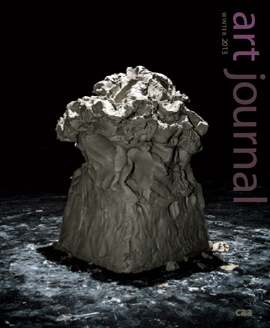
Winter 2013, Vol. 72, No. 4
Artist’s Project Jeanne Dunning,Tom Thumb, the New Oedipus, 5 Features Forum: Sexing Sculpture: New Approaches to Theorizing the Object Jillian Hernandez and Susan Richmond, Introduction, 27 Rachel Lachowicz, Portfolio: Material Specificity and the Index of the Feminine, 30 Rachel Middleman,Rethinking

Winter 2013, Vol. 72, No. 4
Artist’s Project Jeanne Dunning,Tom Thumb, the New Oedipus, 5 Features Forum: Sexing Sculpture: New Approaches to Theorizing the Object Jillian Hernandez and Susan Richmond, Introduction, 27 Rachel Lachowicz, Portfolio: Material Specificity and the Index of the Feminine, 30 Rachel Middleman,Rethinking
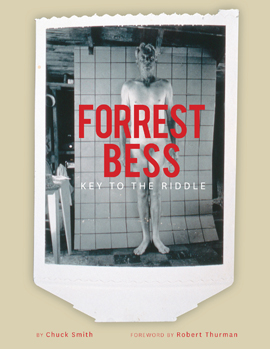
The Aesthetic Gold of a Ravished Spouse of the Godhead
By Elisabeth Kley
Although mystery has surrounded the life of Forrest Bess since he died in 1977, quite a bit of the cloud is dispelled in Chuck Smith’s new book, Forrest Bess: Key to the Riddle. A follow-up to a film Smith made in 1999, it is an ideal combination of monograph and biography.

The Aesthetic Gold of a Ravished Spouse of the Godhead
By Elisabeth Kley
Although mystery has surrounded the life of Forrest Bess since he died in 1977, quite a bit of the cloud is dispelled in Chuck Smith’s new book, Forrest Bess: Key to the Riddle. A follow-up to a film Smith made in 1999, it is an ideal combination of monograph and biography.

Counter to Type
By Karen L. Schiff
In the Spring 2014 issue of Art Journal, Karen L. Schiff created an artists’s project, Counter to Type. Working from the typography on the covers and selected interior pages of the journal, she used colored pencils to draw on transparent overlays.

Counter to Type
By Karen L. Schiff
In the Spring 2014 issue of Art Journal, Karen L. Schiff created an artists’s project, Counter to Type. Working from the typography on the covers and selected interior pages of the journal, she used colored pencils to draw on transparent overlays.
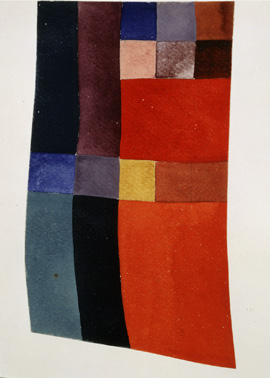
Dada Dance: Sophie Taeuber’s Visceral Abstraction
By Nell Andrew
In a recent landmark exhibition on the intersection of art and dance, Danser sa vie, the Centre Georges Pompidou displayed an enigmatic photograph identified as the artist Sophie Taeuber dancing at the Cabaret Voltaire in 1916. It is not uncommon for a photograph to stand in as an icon of a live event and offer what we hope is access to some present now passed, but for decades scholars have disagreed on the date and location of the Taeuber photograph.

Dada Dance: Sophie Taeuber’s Visceral Abstraction
By Nell Andrew
In a recent landmark exhibition on the intersection of art and dance, Danser sa vie, the Centre Georges Pompidou displayed an enigmatic photograph identified as the artist Sophie Taeuber dancing at the Cabaret Voltaire in 1916. It is not uncommon for a photograph to stand in as an icon of a live event and offer what we hope is access to some present now passed, but for decades scholars have disagreed on the date and location of the Taeuber photograph.
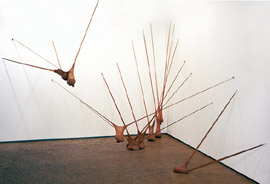
Sexing Sculpture: New Approaches to Theorizing the Object
By Jillian Hernandez and Susan Richmond
This forum, which originated as a panel at the 2013 Annual Conference of the College Art Association in New York, developed from the following question: how do sculptural practices uphold or, conversely, equivocate the certainties of gendered and sexual embodiment?

Sexing Sculpture: New Approaches to Theorizing the Object
By Jillian Hernandez and Susan Richmond
This forum, which originated as a panel at the 2013 Annual Conference of the College Art Association in New York, developed from the following question: how do sculptural practices uphold or, conversely, equivocate the certainties of gendered and sexual embodiment?

Through the Looking-Glass, Darkly
By Tina Rivers
When H. H. Arnason published the first edition of his 1968 book The History of Modern Art, it ended with a one-page entry on “Psychedelic Art.” Positioning the inchoate movement as a bridge between the modern and contemporary periods, the entry was a blueprint for a future that would never come to pass, and was expunged from all further editions, helping to relegate psychedelia to the proverbial dustbin of history.

Through the Looking-Glass, Darkly
By Tina Rivers
When H. H. Arnason published the first edition of his 1968 book The History of Modern Art, it ended with a one-page entry on “Psychedelic Art.” Positioning the inchoate movement as a bridge between the modern and contemporary periods, the entry was a blueprint for a future that would never come to pass, and was expunged from all further editions, helping to relegate psychedelia to the proverbial dustbin of history.

Queer Formalisms: Jennifer Doyle and David Getsy in Conversation
By Jennifer Doyle and David Getsy

Fall 2013, Vol. 73, No. 3
Karin Higa: A Collage of Remembrances, 5 Artist’s Project Sara Greenberger Rafferty, Grabs, 1, 47, 64, 82, 91, 104 Features Matthew Goulish, “A Clear Day and No Memories”: Neurology, Philosophy, and Analogy in Kerry Tribe’s H.M., 12 Atreyee Gupta, In

Fall 2013, Vol. 73, No. 3
Karin Higa: A Collage of Remembrances, 5 Artist’s Project Sara Greenberger Rafferty, Grabs, 1, 47, 64, 82, 91, 104 Features Matthew Goulish, “A Clear Day and No Memories”: Neurology, Philosophy, and Analogy in Kerry Tribe’s H.M., 12 Atreyee Gupta, In
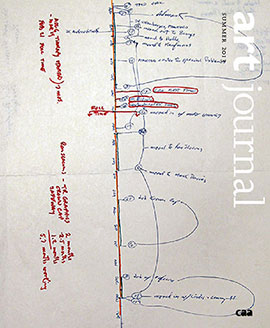
Summer 2013, Vol. 72, No. 2
Features Alexandra M. Kokoli, The Voice as Uncanny Index in Susan Hiller’s The Last Silent Movie, 6 Kirsten Olds, “Gay Life Artists”: Les Petites Bonbons and Camp Performativity in the 1970s, 16 Forum: Conversations on Queer Affect and Queer Archives

Summer 2013, Vol. 72, No. 2
Features Alexandra M. Kokoli, The Voice as Uncanny Index in Susan Hiller’s The Last Silent Movie, 6 Kirsten Olds, “Gay Life Artists”: Les Petites Bonbons and Camp Performativity in the 1970s, 16 Forum: Conversations on Queer Affect and Queer Archives
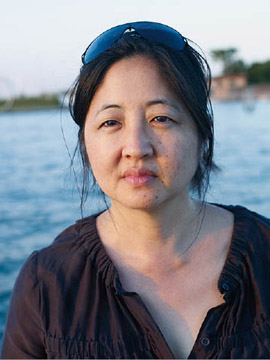
Karin Higa: A Collage of Remembrances
Well before I met Karin Higa, I knew of her as a curator of Asian American art, a prominent voice in the contemporary art world, and an author whose writings I frequently assigned to students.

Karin Higa: A Collage of Remembrances
Well before I met Karin Higa, I knew of her as a curator of Asian American art, a prominent voice in the contemporary art world, and an author whose writings I frequently assigned to students.

“A Clear Day and No Memories”: Neurology, Philosophy, and Analogy in Kerry Tribe’s H.M.
By Matthew Goulish
In order to begin I must tell a horror story. I will try to mitigate the horror, through accuracy of telling, through facts, and through a degree of humility before them. Yet I will acknowledge it. I mean I already have. Horror is not fact.

“A Clear Day and No Memories”: Neurology, Philosophy, and Analogy in Kerry Tribe’s H.M.
By Matthew Goulish
In order to begin I must tell a horror story. I will try to mitigate the horror, through accuracy of telling, through facts, and through a degree of humility before them. Yet I will acknowledge it. I mean I already have. Horror is not fact.

Modernism, Essentialism, and “Racial Art” in America
By Amy Lyford
It is exciting to read two books that demonstrate the power, impact, and necessity of art history’s engagement with critical race studies—especially in the context of scholarship on modernist American art.

Modernism, Essentialism, and “Racial Art” in America
By Amy Lyford
It is exciting to read two books that demonstrate the power, impact, and necessity of art history’s engagement with critical race studies—especially in the context of scholarship on modernist American art.

